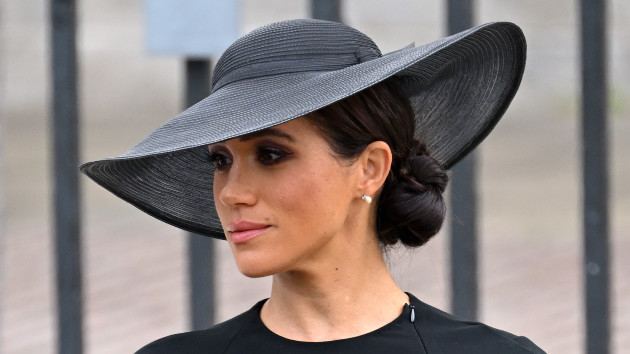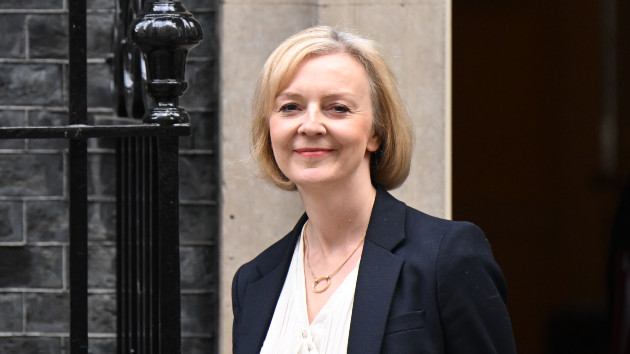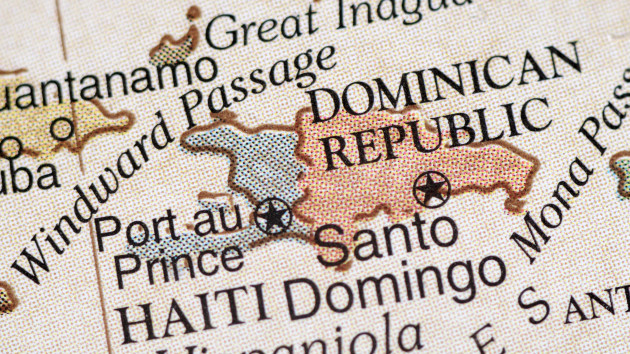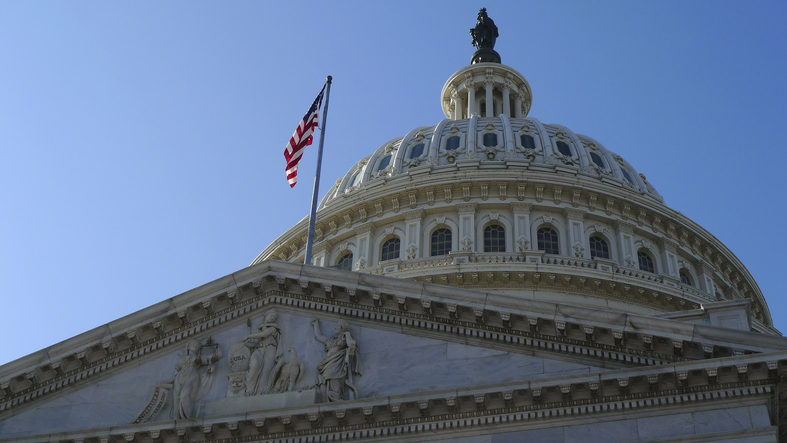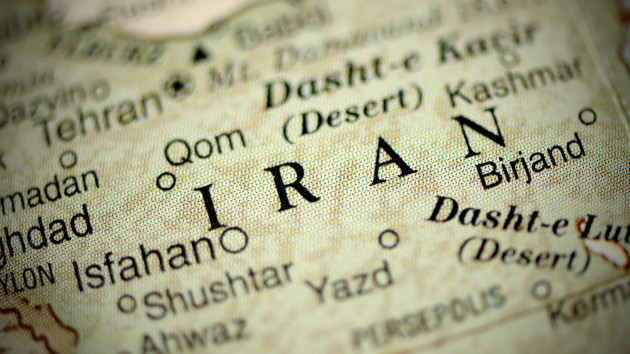
(LONDON) — Iranian sport climber Elnaz Rekabi returned to Tehran early Wednesday after she garnered global attention for competing overseas without wearing a hijab, which is required of female athletes representing the Islamic Republic.
Iran’s state-run IRNA news agency filmed Rekabi’s arrival and briefly interviewed her at Imam Khomeini International Airport, southwest of the capital. Other videos shared online purportedly showed large crowds gathered outside to welcome home the 33-year-old professional athlete, chanting her name and calling her a “hero.”
The state media footage captured Rekabi, clad in a black hoodie over a black baseball cap covering her dark hair, as she walked into one of the airport’s terminals, where she received flowers from a fan and then repeated to reporters an explanation posted earlier on Instagram for why she had competed without the Islamic headscarf at the International Federation of Sport Climbing’s Asian Championships in Seoul, South Korea on Sunday.
“It was completely unintentional,” Rekabi said. “I was unexpectedly called and I had to compete. I was busy putting on my shoes and technical gear, and that caused me to forget putting on the hijab I had to be wearing. Then I went to compete.”
“Fortunately, I came back to Iran with peace of mind, although I went through a lot of tension and stress,” she added. “So far, thank God, nothing has happened.”
A state media reporter then said: “It was rumored that nobody knew where you were for 24 or 48 hours. Such weird rumors were being made.”
Rekabi replied: “No, this didn’t happen. We came back to Iran according to the plan. Until this moment, everything has been going on according to the plan.”
However, critics of the Iranian government believe Rekabi’s explanation was “forced” and that she could still face severe consequences.
“What can happen to her is first of all to be sent to prison,” Iranian women’s rights activist Mahya Ostovar, an Iranian women’s rights activist and lecturer at University of Galway, Ireland, told ABC News in an interview on Tuesday. “She can be forced to confess in front of the camera on national TV.”
The Iranian Embassy in Seoul confirmed in a statement posted to Twitter that Rekabi had left Seoul for Tehran on Tuesday morning.
“The Embassy of the Islamic Republic of Iran in South Korea strongly denies all fake news, lies and false information about Mrs. Elnaz Rekabi,” the embassy added.
Since the 1979 Islamic Revolution, women are required to wear a hijab in Iran. They must also abide by the mandatory rule outside Iran when they are officially representing the country abroad. Iranian women who don’t cover up in public are routinely arrested by the country’s morality police.
Large-scale protests have swept across Iran in recent weeks, sparked by the death of a young woman who was detained by the morality police for breaching the strictly enforced Islamic dress code. Mahsa Amini, 22, died in police custody in Tehran on Sept. 16, three days after she was arrested over allegedly wearing her state-mandated hijab too loosely. Iran requires women to don the garment in a way that fully covers their hair while in public.
Iranian police have denied that Amini was mistreated. They said she suffered a heart attack at the police station and died after being in a coma for two days.
Female protesters in Iran have been seen taking off their headscarves and cutting their hair to show solidarity with Amini. The movement has garnered global attention, with people around the world taking to the streets in support of the Iranian protesters.
The widespread demonstrations in Iran have been met with a brutal crackdown by authorities, who are disrupting internet access and allegedly using both excessive and lethal force. Nearly 8,000 protesters have been arrested and at least 240 have been killed, including 32 children, according to U.S.-based rights monitor HRANA.
Rekabi initially appeared with a hijab at the weeklong annual Asian Championships in the South Korean capital, but then wore just a black headband when competing in the final round on Sunday. She finished in fourth place.
The Iran Mountaineering and Sport Climbing Federation announced the result on its website alongside an undated image of Rekabi wearing a hijab. Rekabi did not respond to ABC News’ request for comment on Monday, while telephone calls to the Iranian climbing federation went unanswered. However, on Tuesday, an Instagram account in Rekabi’s name posted a statement in Farsi, saying: “Due to finals sensitivity and unexpected call to climb the wall, my hijab went wrong unintentionally.”
Rekabi is believed to be one of the first Iranian female athletes to disobey the hijab requirement — a move that was widely praised by observers on social media as “historic,” “daring,” “courageous” and “powerful.” Sadaf Khadem, 27, was bare-headed and wore shorts when she became the first female Iranian boxer to win an overseas fight in April 2019. Khadem had intended to return to Tehran after the competition but was forced to stay in France, after Iranian authorities reportedly issued an arrest warrant over her violations of the dress code.
In December 2019, Iranian chess player Mitra Hejazipour removed her hijab during the World Rapid and Blitz Chess Championship in Moscow while competing under the Islamic Republic’s flag. The Iran Chess Federation subsequently expelled her. The 29-year-old is now said to be competing in a private capacity and living in France.
Amid growing concerns for Rekabi, the International Federation of Sport Climbing (IFSC) released a statement on Tuesday saying it is keeping an eye on the case and stands behind athletes.
“There is a lot of information in the public sphere regarding Ms. Rekabi and as an organisation we have been trying to establish the facts. We have also been in contact with Ms. Rekabi and the Iranian Climbing Federation,” the IFSC said. “Our understanding is that she is returning to Iran, and we will continue to monitor the situation as it develops on her arrival. It is important to stress that athletes’ safety is paramount for us and we support any efforts to keep a valued member of our community safe in this situation. The IFSC fully support the rights of athletes, their choices, and expression of free speech.”
Copyright © 2022, ABC Audio. All rights reserved.


